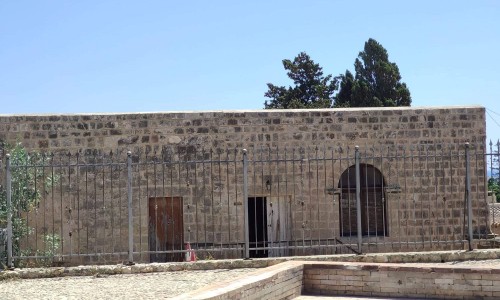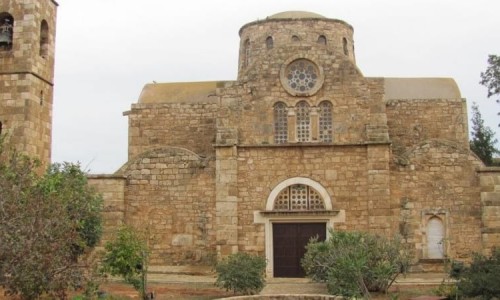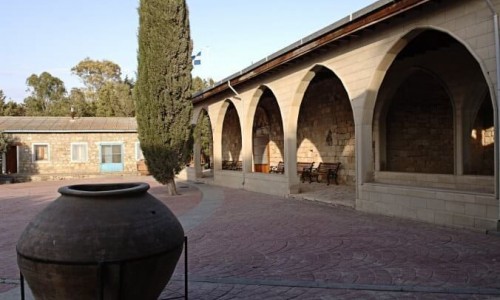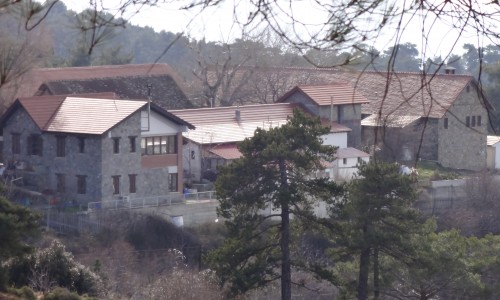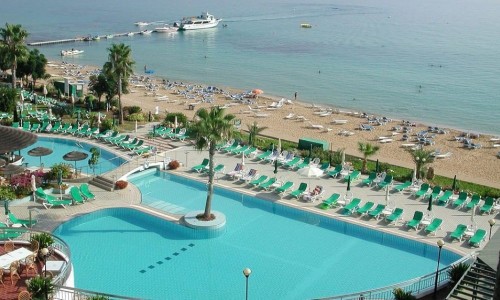Apostolou Andrea Monastery
At the farthest edge of Cyprus, where the wild Karpas Peninsula stretches toward the open sea like a finger pointing to the horizon, lies a place unlike any other: Apostolos Andreas Monastery. Here, on the cliffs where land meets sea and silence reigns, faith has stood still for centuries. This is not just a church—it is a place of miracles, memory, and longing. It is a sanctuary beloved across generations and across divides, where the island’s complex history breathes alongside its deepest hopes.
The Arrival of the Apostle: A Sacred Legend
According to deeply rooted Christian tradition, Saint Andrew the Apostle, one of Jesus Christ’s closest disciples and the brother of Saint Peter, found himself at this remote spot following a shipwreck. During his ordeal, he is said to have struck a rock, causing a spring of fresh water to gush forth. The water, believed to be divinely blessed, healed the blindness of the ship’s captain and later of countless pilgrims who visited the site.
This small miracle at the very edge of the island became the foundation for something greater: a shrine that would grow into a monastery, and a monastery that would become a spiritual anchor for an entire people.
From Humble Chapel to Grand Monastery
The first recorded place of worship here was a small medieval chapel, built in the 15th century over the site of the spring. The structure was simple, meant only to shelter pilgrims and protect the sacred water source. But by the 19th century, with devotion to Saint Andrew growing stronger, a larger church and monastic complex was constructed.
The current monastery’s main church, built between 1865 and 1867 under the leadership of Abbot Ioannikios, is a fine example of neoclassical Cypriot architecture. It features:
- A stately bell tower that rises above the complex, once used to call monks and pilgrims to prayer.
- Wide verandas and cloisters, offering shade from the Karpasian sun and sweeping views of the sea.
- An intricately carved wooden iconostasis, separating the altar from the nave, decorated with saints and gospel scenes.
- Arched ceilings and cool stone floors, echoing with the quiet footsteps of visitors from around the world.
Adjacent to the church, smaller buildings once served as monks’ cells, guest quarters, kitchens, and storage areas. A large courtyard allowed pilgrims to gather, many of whom had journeyed on foot or by donkey from across the island.
The Miraculous Spring
At the heart of the monastery is its most humble and sacred element: the spring. Flowing gently in a cave beneath the church, its water is collected in bottles by the faithful and the curious alike. For centuries, people have believed it could cure ailments of the body and spirit. Stories of restored sight, healed children, and answered prayers surround the spring with a quiet mystery.
Even for skeptics, there is something undeniable in the way light dances across the stones of the grotto and how silence settles among those who kneel to touch the water.
Division, Silence, and Return
For most of its history, Apostolos Andreas was one of the most important pilgrimage sites for Greek Orthodox Christians on the island. But that changed abruptly after 1974, when Cyprus was divided following a military coup and subsequent Turkish intervention. The monastery, located in the far north of the island, became inaccessible to the majority of its pilgrims. Greek Cypriots could no longer visit freely, and the monastery fell into neglect. Paint peeled, walls crumbled, and the once vibrant heartbeat of the site became faint.
But for those who remembered, Apostolos Andreas remained a symbol of continuity—a lost but never forgotten part of Cypriot identity.
Hope returned in 2003, when border crossings between north and south were partially opened. Pilgrims began to return, many after decades away. Tearful, reverent, and emotional, their visits were acts of both devotion and reconciliation.
A Shared Restoration: Building Bridges Through Faith
In 2014, a moment of unprecedented cooperation brought new life to the monastery. The bicommunal Technical Committee on Cultural Heritage, supported by the United Nations Development Programme (UNDP), launched a multi-million-euro project to restore the site—funded jointly by the Greek Cypriot Church of Cyprus and the Turkish Cypriot religious foundation EVKAF.
Craftsmen, engineers, and conservators from both communities worked side by side. Together, they restored the roof, reinforced the walls, stabilized the spring, cleaned the icons, and rejuvenated the space. By 2016, the main phase of restoration was complete, and the monastery reopened in a joyous, symbolic ceremony.
The project was not only about repairing stone and wood—it was a quiet but powerful act of healing Cyprus itself.
Visiting the Monastery Today
To reach Apostolos Andreas is to journey into one of the island’s last untouched wildernesses. The Karpas Peninsula, with its rolling hills, olive groves, and lonely beaches, is home to wild donkeys, rare birds, and traditional villages.
The monastery emerges near the tip of the peninsula like a white crown on a cliff. Whether you arrive by road, walking pilgrimage, or on a spiritual quest, the experience is transformative. Visitors can:
- Light a candle in the cool shadows of the church.
- Collect holy water at the spring grotto.
- Gaze out over the vast blue sea in silence.
- Visit nearby Golden Beach, often regarded as one of the most pristine on the island.
Feast Days & Pilgrimage
The most important day at Apostolos Andreas is November 30, the feast of Saint Andrew. On this day, thousands of pilgrims arrive—some still making the journey on foot, others arriving by bus or car. The monastery fills with prayers, bells, incense, and music. It is a deeply emotional event, especially for those who once believed they’d never return.
Other major Orthodox feast days, particularly August 15 (Dormition of the Virgin), also bring life to the complex.
More Than a Church
Apostolos Andreas Monastery is more than a site on a map. It is a living symbol of faith, resilience, and shared heritage. It connects generations—grandparents who once came as children, returning with their own grandchildren. It bridges communities—Greek and Turkish Cypriots, Christians and Muslims, locals and travelers. It stands not only for what was lost, but for what can still be found: understanding, beauty, peace.
At the edge of the island, it teaches that sometimes the farthest places are where we find ourselves closest to the divine.


